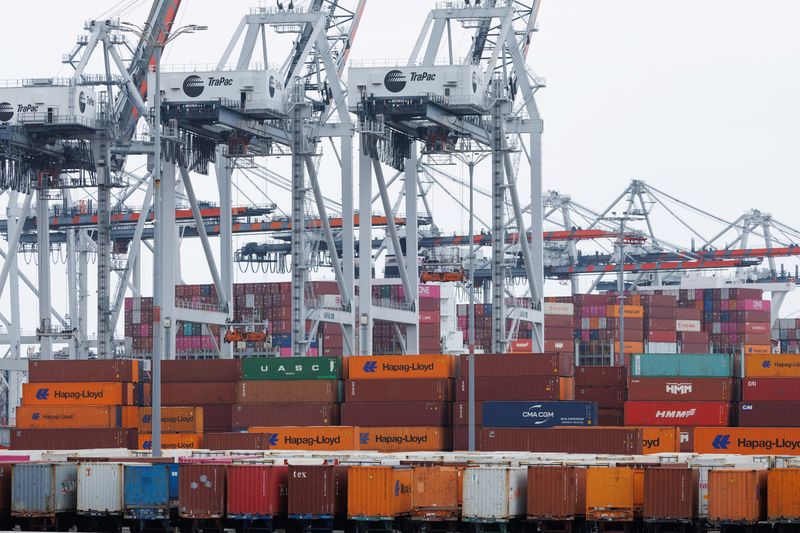By Lucia Mutikani
WASHINGTON (Reuters) -The U.S. trade deficit widened in November, likely as businesses worried about President-elect Donald Trump's threats to raise tariffs on foreign goods front-loaded imports, more than offseting a surge in exports to a record high.
Should the rising trend in imports persist in December, trade could be a drag on economic growth in the fourth quarter.
"There is evidence that importers are bringing in more goods to stockpile before Trump 2.0 gets fully up and running," said Christopher Rupkey, chief economist at FWDBONDS. "The Trump administration will certainly have their hands full if they truly wish to turn back the clock more than twenty years ago when the U.S. was a world leader in manufacturing."
The trade gap increased 6.2% to $78.2 billion from a revised $73.6 billion in October, the Commerce Department's Bureau of Economic Analysis said on Tuesday. Economists polled by Reuters had forecast the trade deficit widening to $78.0 billion from the previously reported $73.8 billion in October.
Imports rose 3.4% to $351.6 billion. Goods imports surged 4.3% to $280.9 billion. They were driven by a $3.7 billion increase in industrial supplies and materials, with crude oil imports rising $1.0 billion. Capital goods imports increased $3.5 billion, reflecting semiconductors and civilian aircraft.
Imports of foods, feeds, and beverages rose $1.4 billion, while those of automotive vehicles, parts and engines advanced $1.2 billion.
Trump has said he would impose a 25% tariff on all products from Mexico and Canada and an additional 10% tariff on goods from China. Trump on Monday denied a newspaper report that said his aides were exploring tariff plans that would only cover critical imports.
Imports of services rose less than $0.1 billion to a record high $70.6 billion amid modest gains in charges for the use of intellectual property, insurance services, other business services and travel. But transport services imports fell $0.4 billion.
Exports advanced 2.7% to $273.4 billion, an all-time high. Goods exports increased 3.6% to $177.6 billion. They were boosted by exports of industrial supplies and materials, which increased $4.3 billion, lifted by other petroleum products, crude oil and plastic materials.
Motor vehicles, parts and engines exports increased $1.9 billion. Exports of capital goods rose $1.8 billion, driven by civilian aircraft engines and other industrial machinery.
Consumer goods exports increased $1.6 billion, mostly pharmaceutical preparations. Exports of other goods decreased $5.0 billion. Exports of services climbed $0.9 billion to $95.8 billion, an all-time high. They were lifted by increases in travel and transport services.
The goods trade deficit increased 5.5% to $103.4 billion. When adjusted for inflation, the goods trade deficit rose 5.1% to $96.5 billion. The so-called real trade deficit average for the first two months of the fourth quarter is running slightly below the third quarter average.

That would suggest trade could make a small contribution or have a neutral impact on gross domestic product in the October-December quarter.
Economists, however, expect imports to remain elevated in December. Trade has subtracted from GDP for three straight quarters. The Atlanta Federal Reserve is currently forecasting GDP rising at a 2.4% annualized rate in the fourth quarter. The economy grew at a 3.1% pace in the July-September quarter.